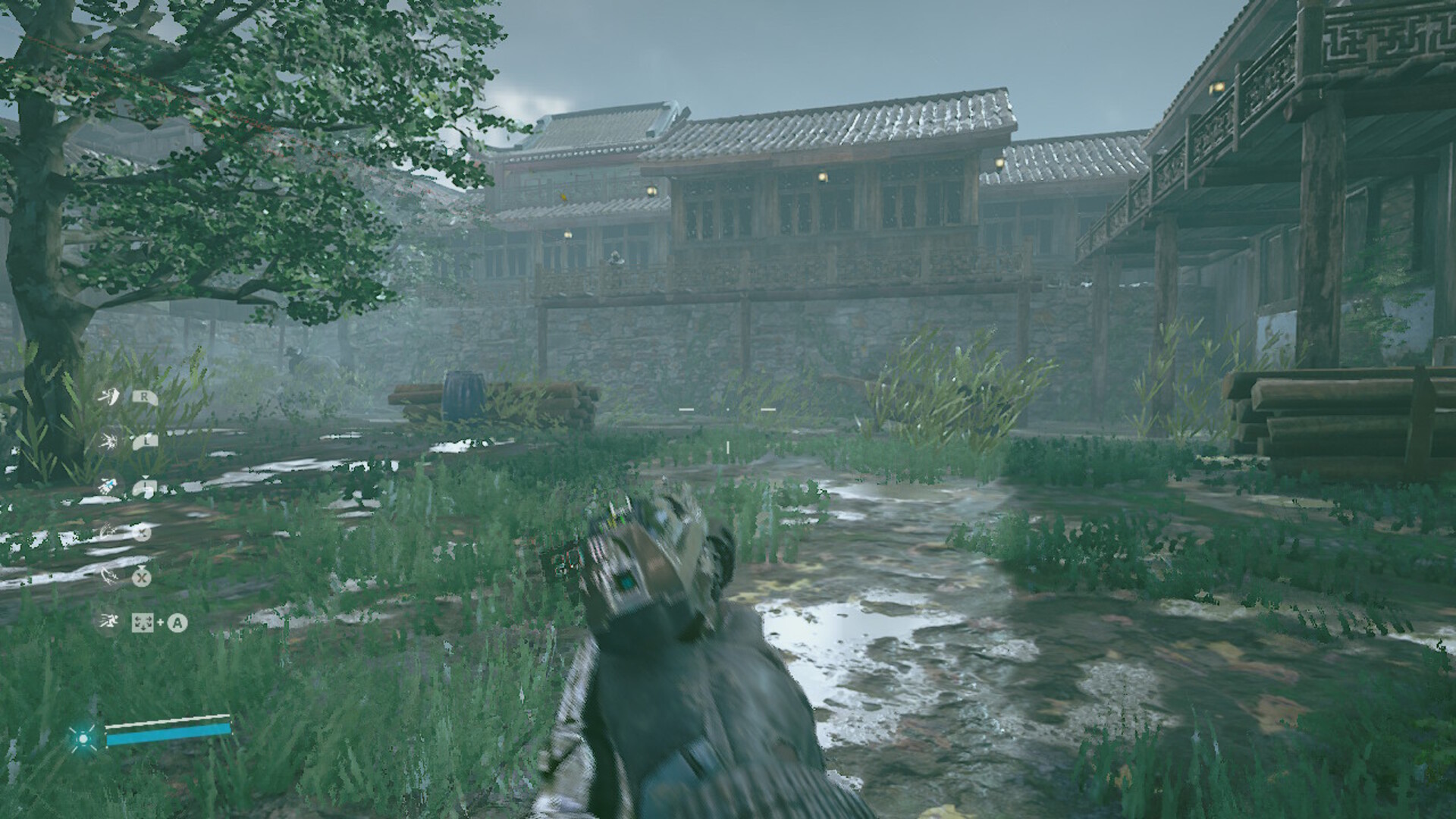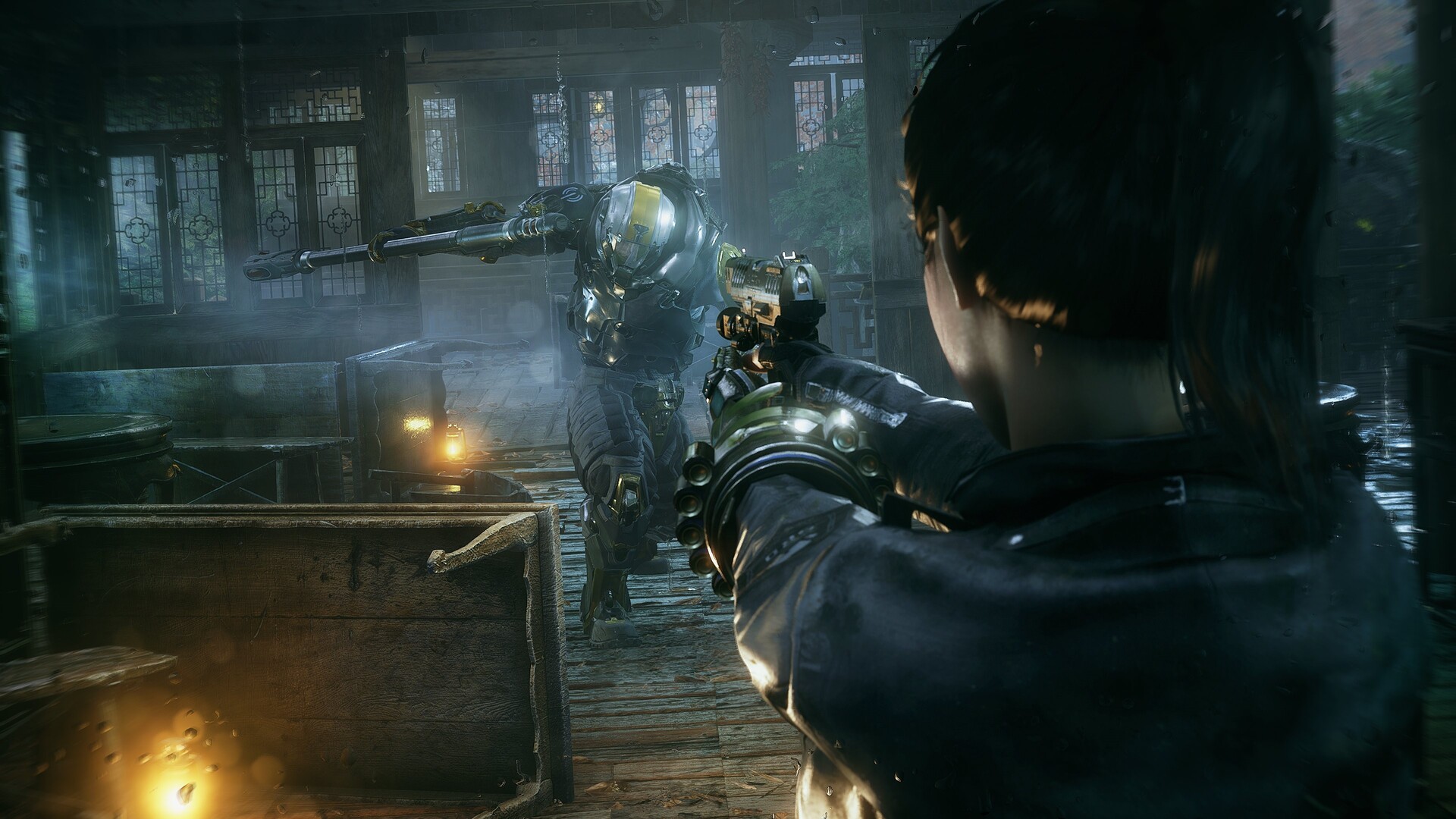Bright Memory: Infinite may be flawed, but the FPS combat is pristine
Bright Memory: Infinite’s combat system is a diamond in the rough

Bright Memory: Infinite is something of an enigma. You might be forgiven for writing it off after watching its opening cutscene. Our protagonist, Shelia, is going about her day in cyberpunk land. She is called on by her enigmatic handlers to stop some baddies, somewhere, from doing something nefarious; typical FPS fare. So far, so bland.
Once Shelia arrives at her destination, however, everything changes. While the plot remains vague and inscrutable, something magical happens the moment Bright Memory: Infinite begins its combat tutorial.
Shelia is equipped with a futuristic katana, four different sci-fi firearms, and a cyborg arm complete with gravity manipulation technology. On paper, this seems eclectic even for a cyberpunk FPS. In practice, however, this bold synthesis of game mechanics makes for a novel combat experience where you’re encouraged to make use of 3D space. Far from a by-the-numbers shooting gallery, Bright Memory has a fluid dynamism that breaks the mold, and is worthy of your attention.
Ring finger

You need only to see the (rightful) praise lavished upon Elden Ring to understand how important a dynamic combat system can be. Soulsborne games typically force players to make a crucial gameplay choice when it comes to self-defense: do they hold down that block button and hedge their bets, or do they try to time a perfect parry and risk taking a direct hit if they get it wrong?
This kind of dilemma sits at the heart of good game design. If meaningful gameplay is all about decisions, then the agonizing choice between a suboptimal but safe defense and a high risk, high reward gambit is surely its perfect manifestation.
Despite its flaws, this is something that Bright Memory often manages to get right. Almost any attack, even a ranged one, may be parried with a tap of the right bumper. Parry too slowly or too quickly, and you pay the price for your hubris. Parry correctly, however, and you’ll riposte, damaging the offending enemy. Deflecting a bullet towards an unsuspecting enemy feels as cool as it sounds.
There’s substance beneath the style. Certain enemies and bosses are protected by a shield. This shield reduces all incoming damage, except ripostes. It’s a clever move, rewarding skillful parry play, but also allowing you to brute-force through enemy defenses if needed.
Sign up for breaking news, reviews, opinion, top tech deals, and more.
My own attempts at the game’s first boss required ample use of both approaches. The genius, here, is that parrying isn’t always strictly better than dodging. Sometimes it’s safer to keep your enemy at range and fire speculative shots from the assault rifle than to engage directly. Sometimes it’s not. This dichotomy is the focal point that keeps you engaged with Bright Memory during its better moments.
Space game

By offering a combination of ranged and melee enemies, Bright Memory forces you to make full use of the 3D space available. Avoiding gunfire while parrying melee attacks requires a commitment to strafing and dodging worthy of the Slayer in Doom Eternal. Unfortunately, Bright Memory’s level design is occasionally restrictive and handicaps the experience. But, at its finest, you find yourself frenetically darting between opponents, doing your best to stay out of the line of fire while retaliating as best you can.
This dynamic is improved with the addition of two more mechanics. The first is a Titanfall 2-esque jet-powered dash, which is your first port of call for dodging. It offers a robust alternative when parrying isn’t an option. Though Bright Memory lacks the mobility of Titanfall 2, it does retain an echo of the responsiveness that made the mech-based FPS so iconic.
Secondly, we need to talk about the sword. Bright Memory’s blade is fast and feels great to use. It depletes a stamina bar, so is a limited resource, but in a pinch, a flurry of cuts can be the difference between life and death. Charging a range-oriented enemy is not only an option but, if you parry their gunfire successfully en route, becomes optimal.
These two bonus tools elevate the movement mechanics in Bright Memory, adding more meaningful choices to combat navigation. Is it better to dodge and parry, to close to melee, or to keep the enemy at range? Often there is not a cut-and-dry answer and that, ultimately, is what makes it interesting.
Defying gravity

Bright Memory: Infinite also allows you to take advantage of verticality with the occasional gravity-bending mechanic. With a tap of the left bumper, you can drag an unshielded enemy towards you, suspending them in an anti-grav field. Another tap and you fire a bolt of energy, damaging the poor fool on the receiving end of your attack and sending them flying. At this point, your shooting match has transformed into a shooting gallery; your immobile enemy suspended above you and at your mercy.
Though I didn’t find myself relying on this mechanic overmuch, the ability to take ranged enemies out of the equation to buy time and space to deal with their friends was certainly a relief. It was reminiscent of Mass Effect’s crowd control mechanics; giving the player a small but significant degree of agency over the pace of combat. It’s immensely satisfying to whittle down the shield of a tough enemy, then launch them mercilessly into the air, allowing you to shoot them to bits.
Unfortunately, narrow level design occasionally hampers the fun of this mechanic. It’s one thing to levitate an enemy in an open environment, another to do the same in a tight, cluttered corridor where you’re already being pelted with enemy fire.
Rough diamond

All in all, Bright Memory gives its players combat scenarios that burst with exciting decisions to make. Unfortunately, despite excellent combat fundamentals, the game is let down by hit-and-miss level design and jarring pacing. For instance, after defeating the first boss in a climactic if by-the-numbers battle, you are immediately thrown into a barebones stealth section with nothing but a hatchet to help you get from point A to point B. Then, you’re treated to a banal procession of armored mooks spouting dialogue reminiscent of a Metal Gear Solid parody. It seems odd to me that, having enticed you with a wide range of fascinating and interwoven combat mechanics, Bright Memory would then have you wade through 15 minutes of cookie-cutter sneaking. During my time with the game, that jarring feeling sat with me.
Yet there is an endearing earnestness at the core of Bright Memory: Infinite. At every moment, it is unabashedly what it is. When it comes to combat, this ensures a bold and unapologetic palette of mechanics is available to you. It’s what makes its fights special and, by contrast, what makes its other facets seem unleavened by comparison.
No matter how unappealing some of its grindier levels may be, Bright Memory: Infinite makes you feel like a cyberpunk samurai for a majority of the time, and that’s not nothing.

An editor and freelance journalist, Cat Bussell has been writing about video games for more than four years and, frankly, she’s developed a taste for it. As seen on TechRadar, Technopedia, The Gamer, Wargamer, and SUPERJUMP, Cat’s reviews, features, and guides are lovingly curated for your reading pleasure.
A Cambridge graduate, recovering bartender, and Cloud Strife enjoyer, Cat’s foremost mission is to bring you the best coverage she can, whether that’s through helpful guides, even-handed reviews, or thought-provoking features. She’s interviewed indie darlings, triple-A greats, and legendary voice actors, all to help you get closer to the action. When she’s not writing, Cat can be found sticking her neck into a fresh RPG or running yet another Dungeons & Dragons game.